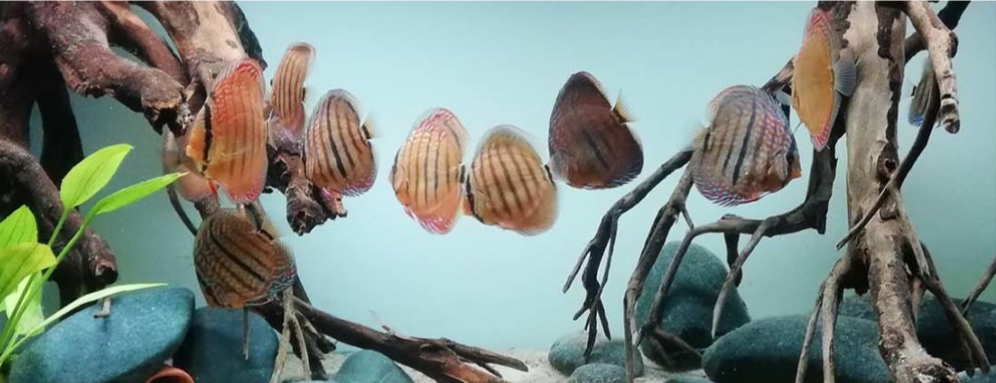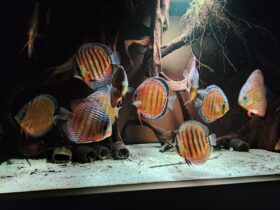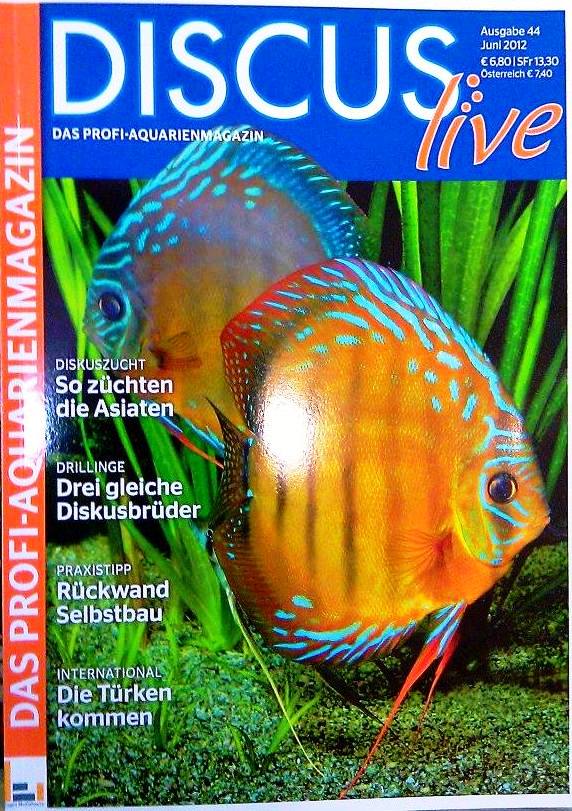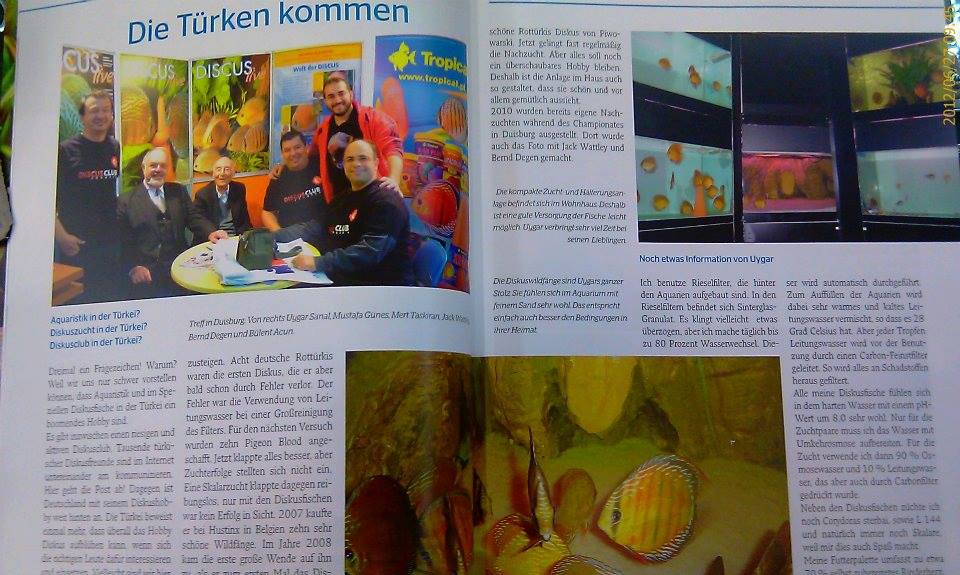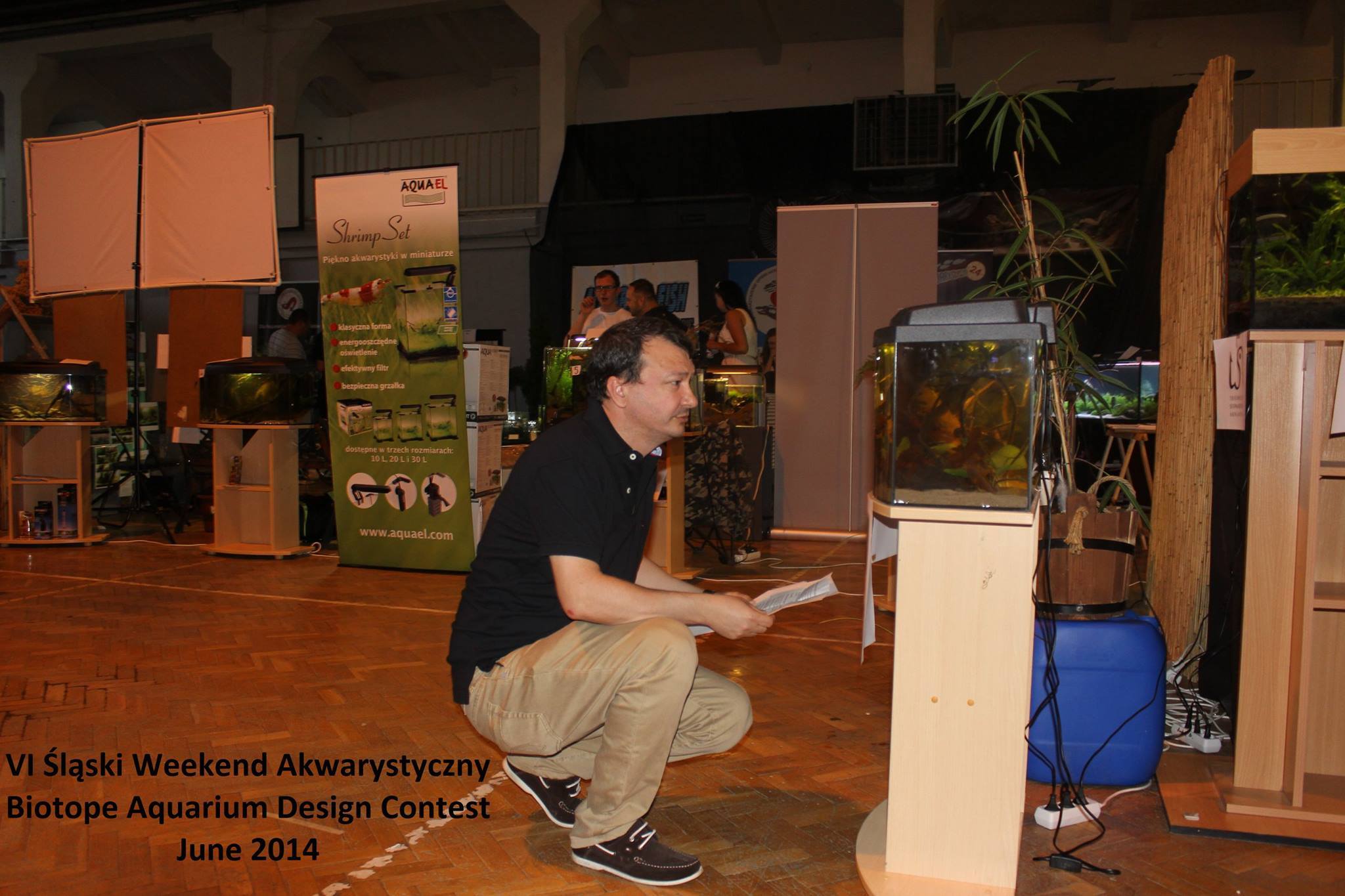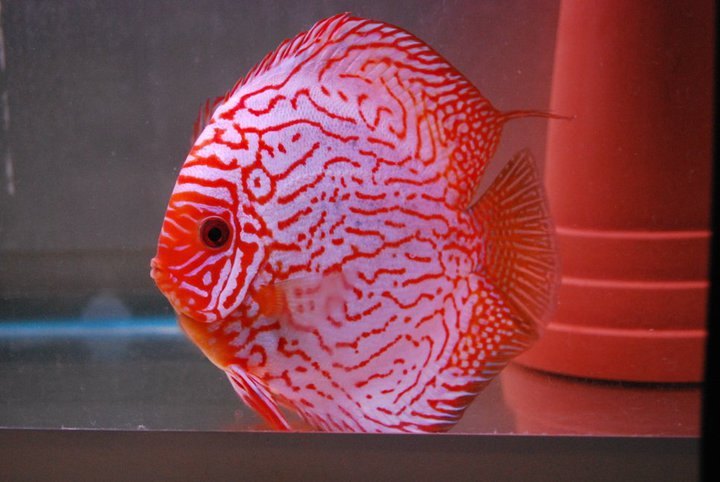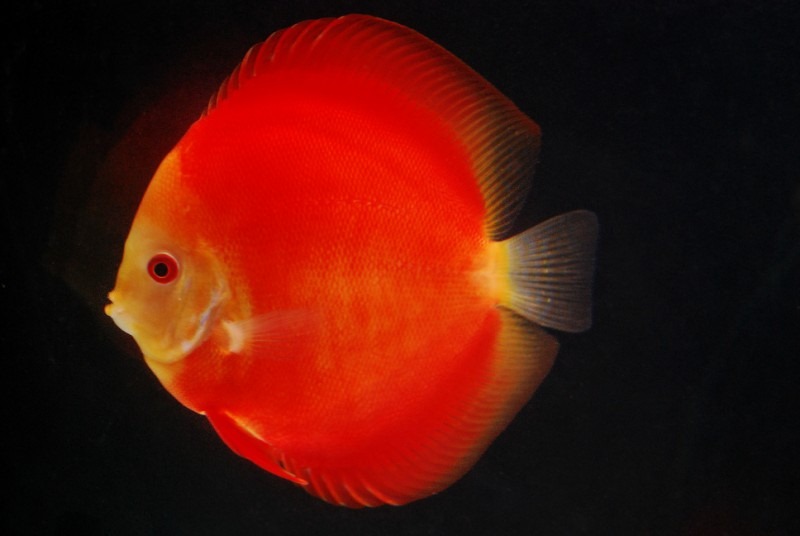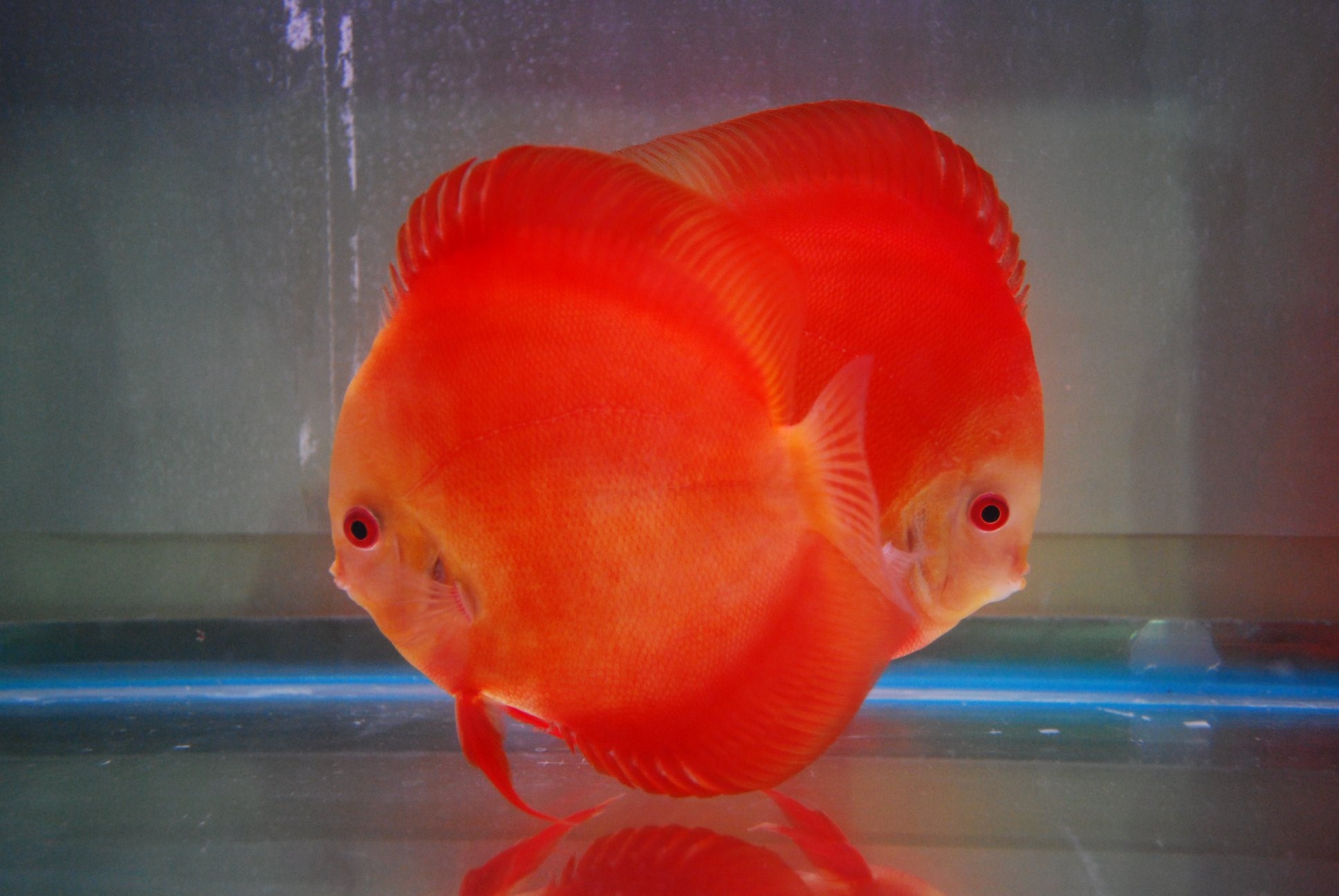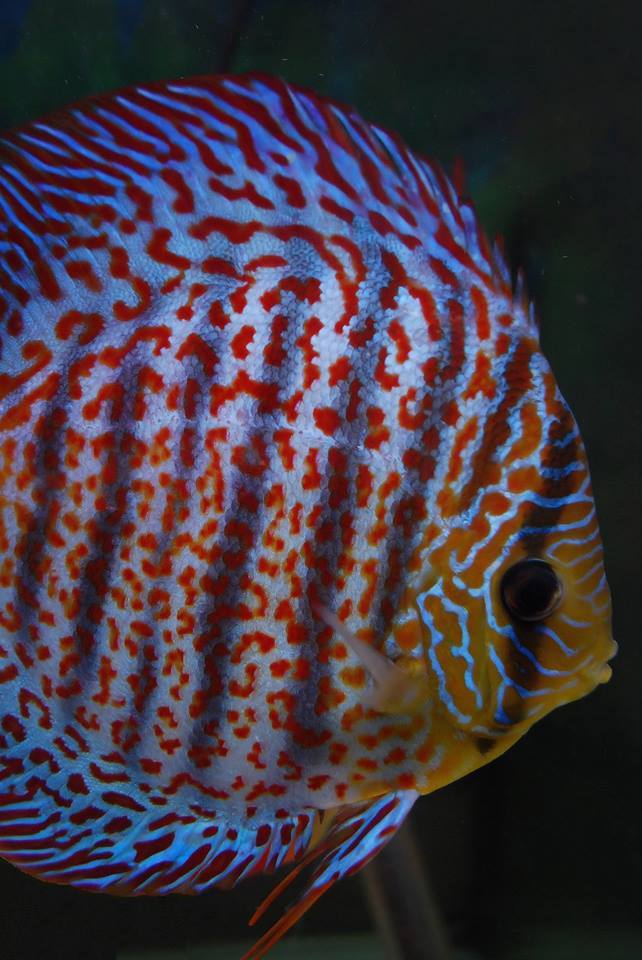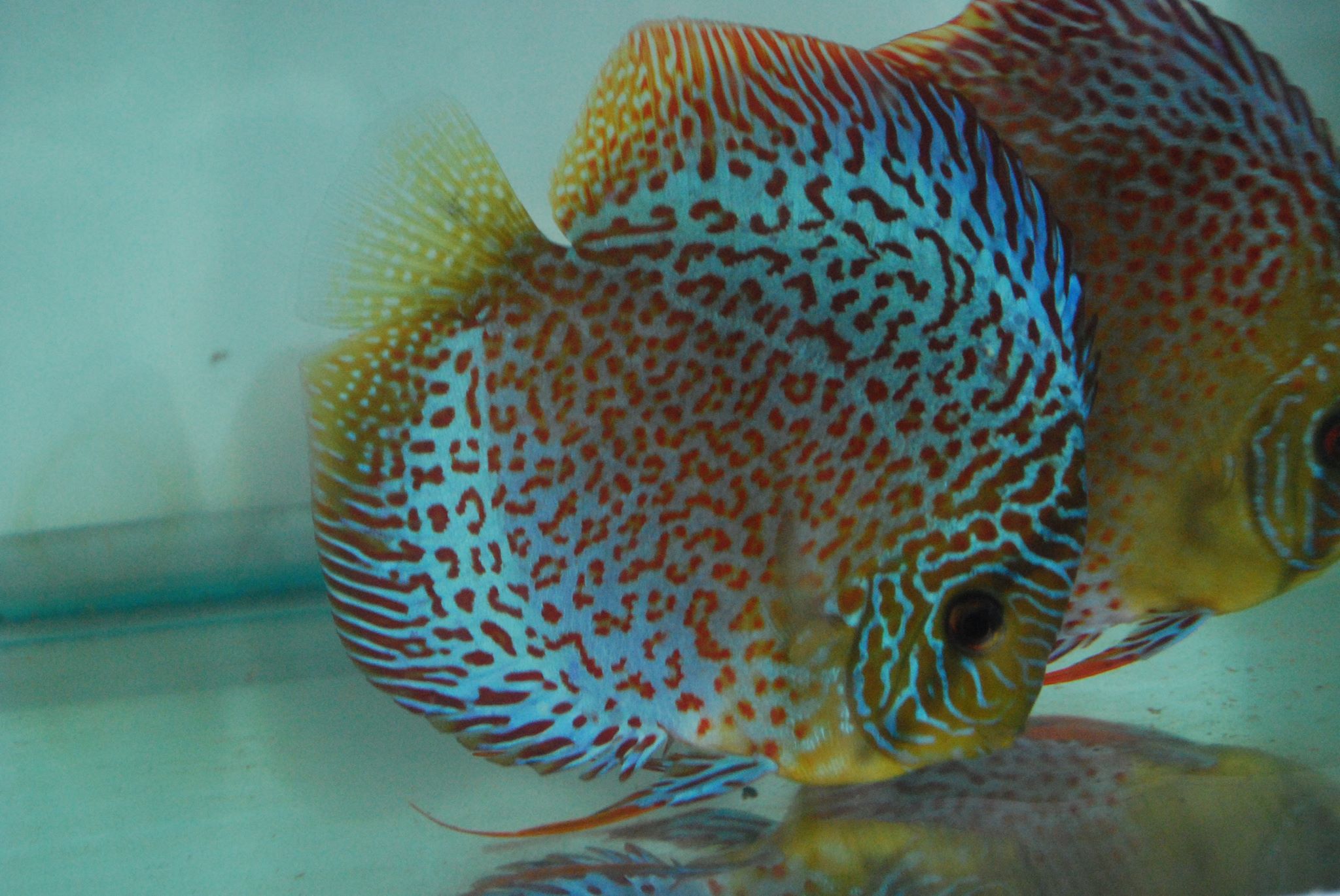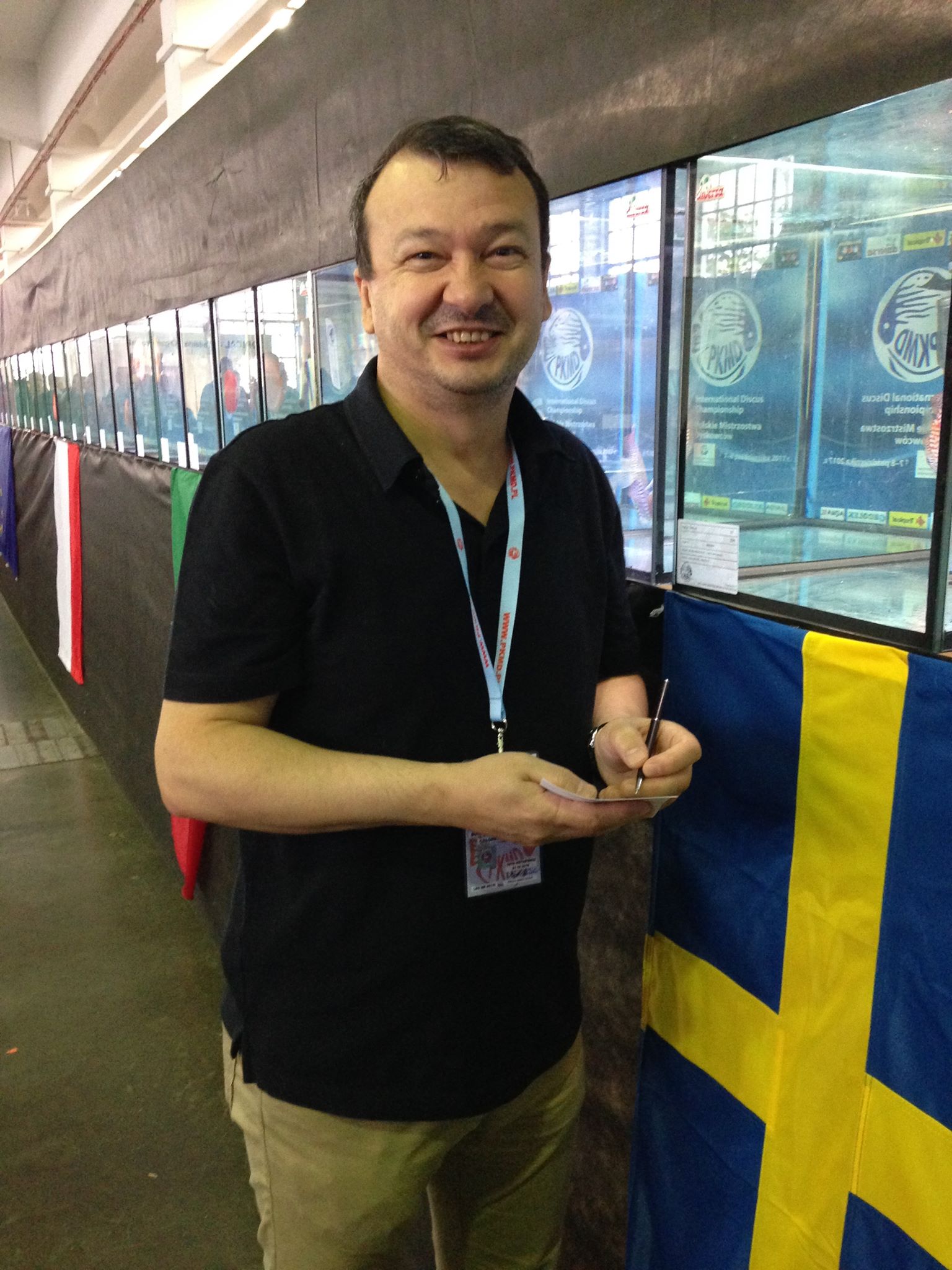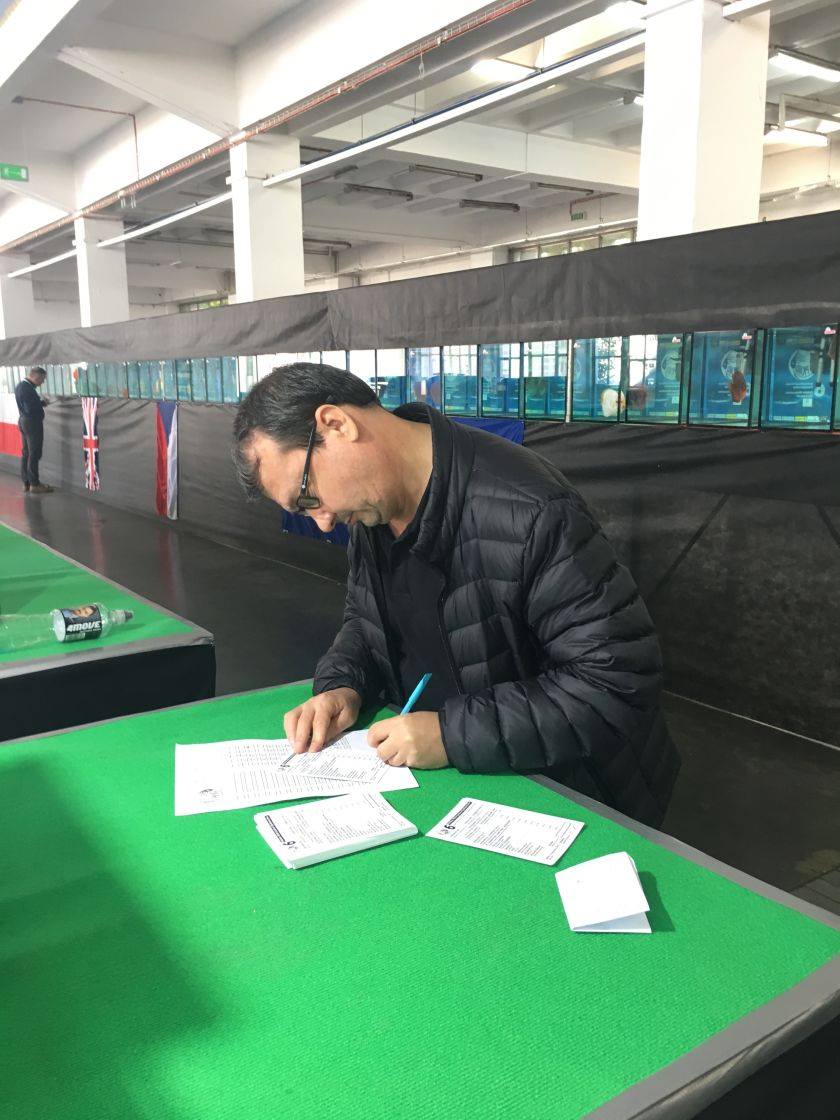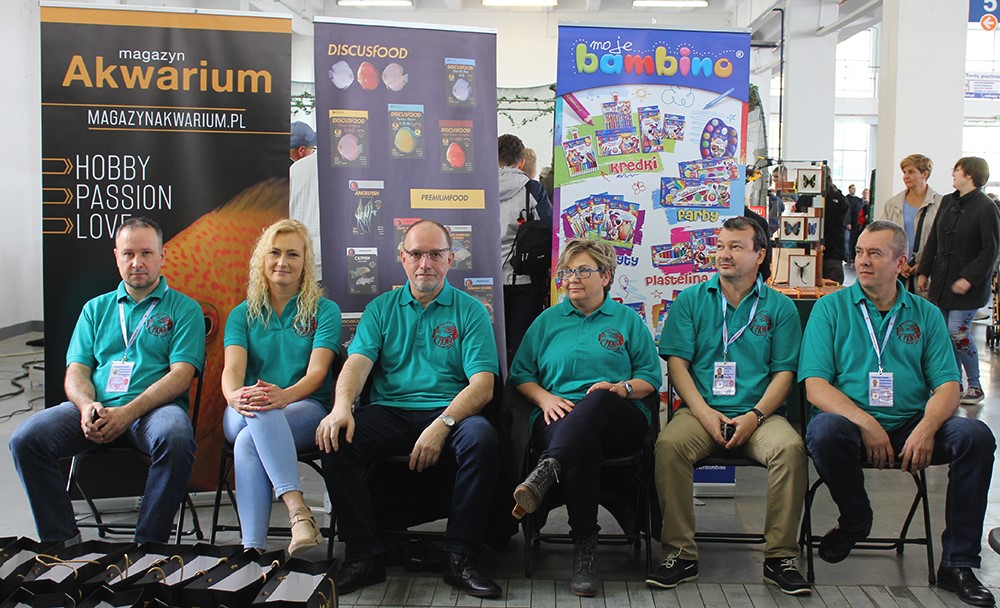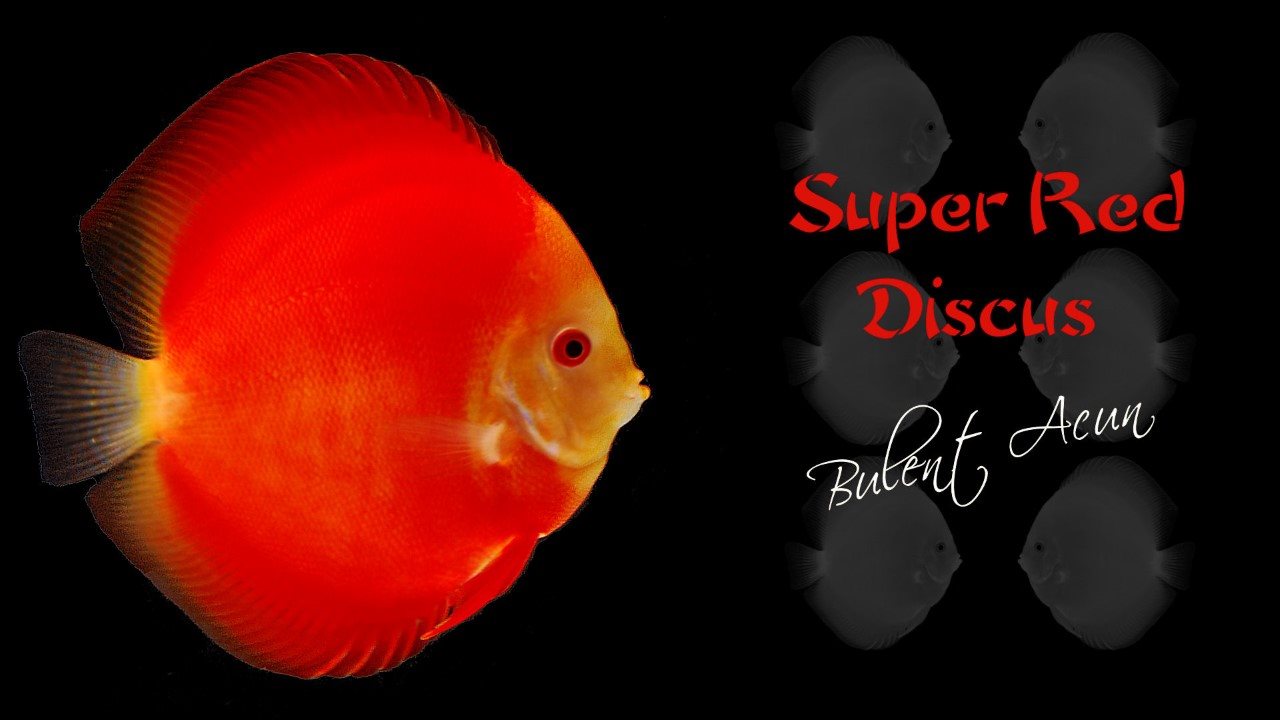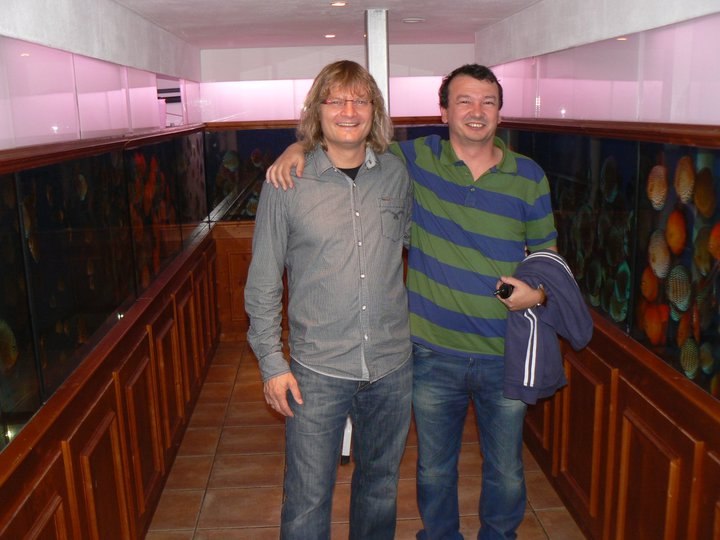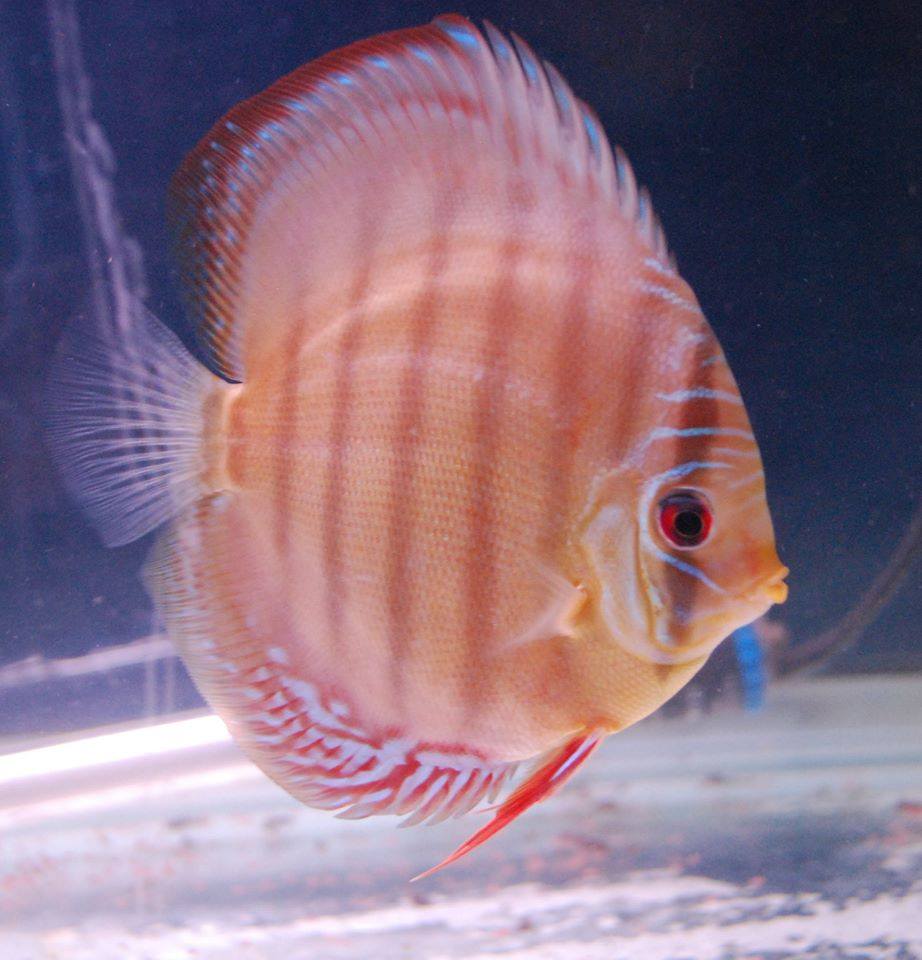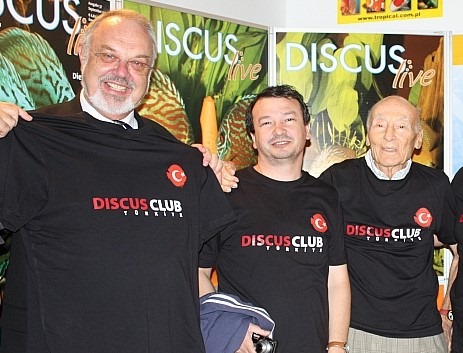Wellcome Mr.Bülent Acun
– can you introduce yourself to members of Diskusari
I am an Aquarist for over 30 years. Visited many countries and discus breeders only to find the best fish for my aquarium.
During this trip I met with many famous discus breeders and made an interiew with them and some of them published in fish magazines and fish club internet pages.
The most important interview was with the legend of the discus Jack Wattley. He is a very special place in my heart. Learned many new things about discus from him. After being a professional Discus breeder. In 2010 I participated the VIII. International Discus Fish Championship, Duisburg Germany with my fish. It was like a Champions league of the discus championships for me.
After this show I had been in many international discus , angelfish, biotope, aquascape championships as a judge. I started setting up biotope and planted aquariums. Actively interested in biotopes for the last 10 years, especially in biotopes of Amazon.
I had been as a judge many championship in different category of Aquarium hobby
Biotope Aquarium Design Contest Judge, International Pterophyllum Championship Judge, Aquascape contest Judge and International Discus Championship Judge and I gave lectures about discus and biotope at different cities.

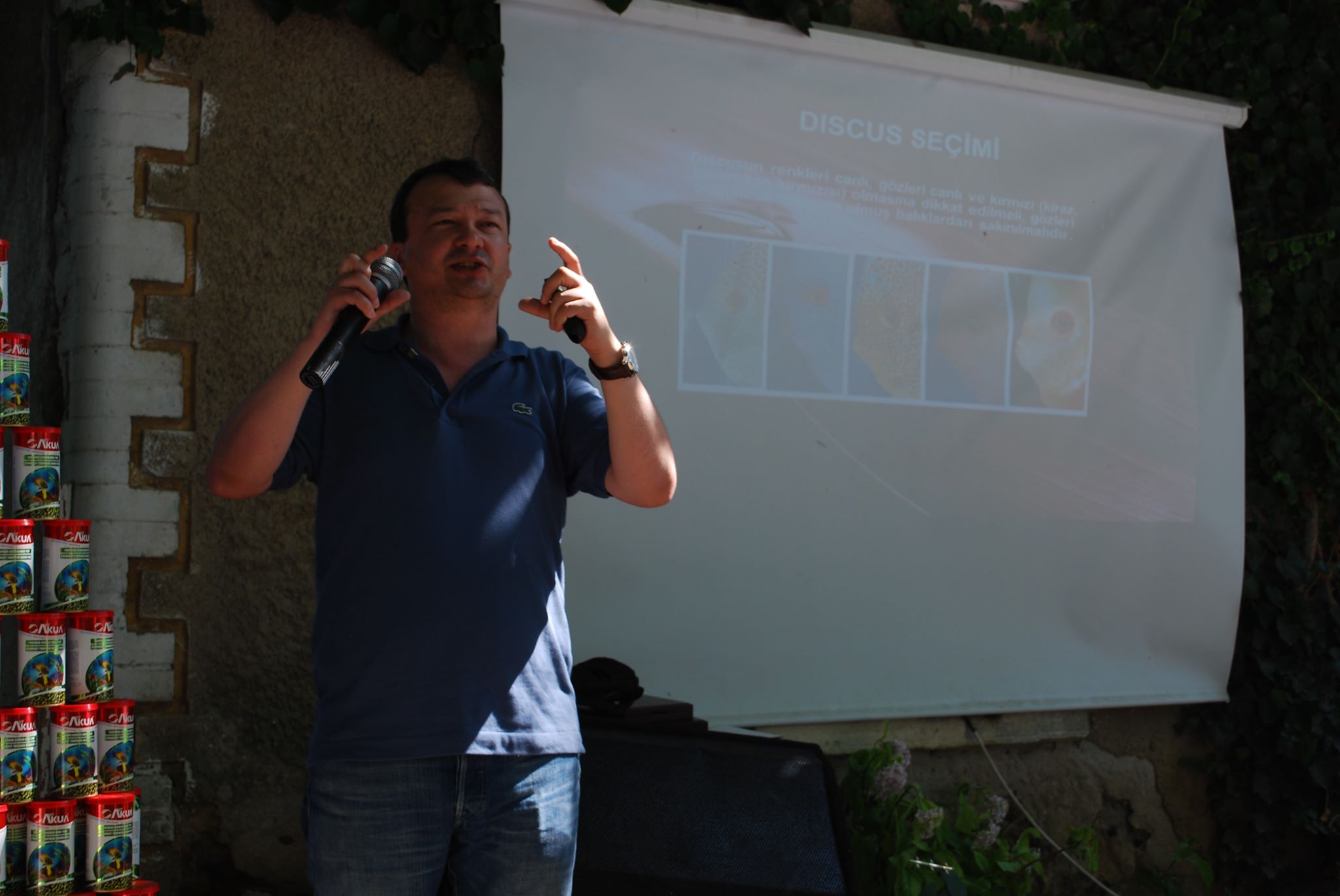
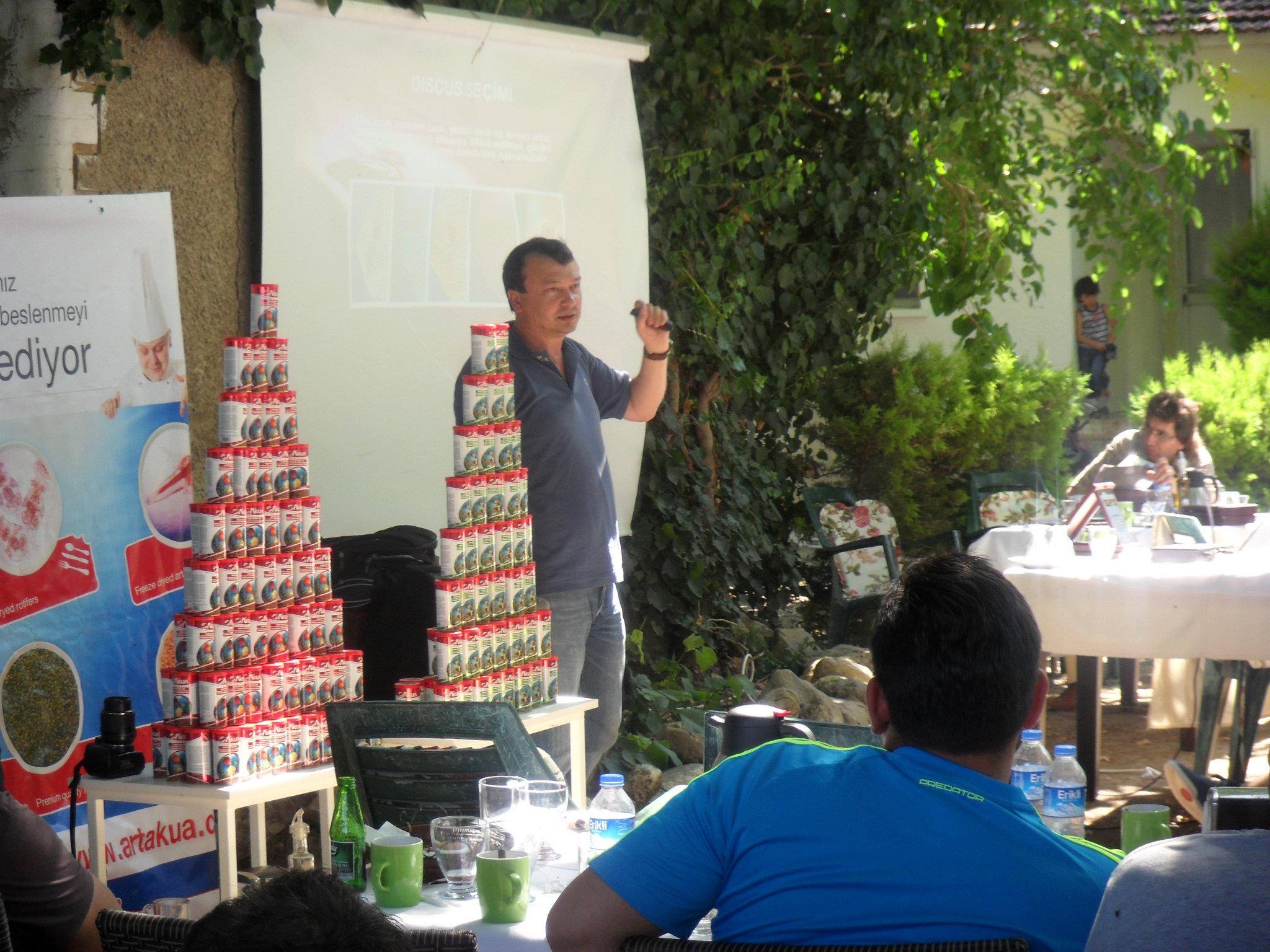
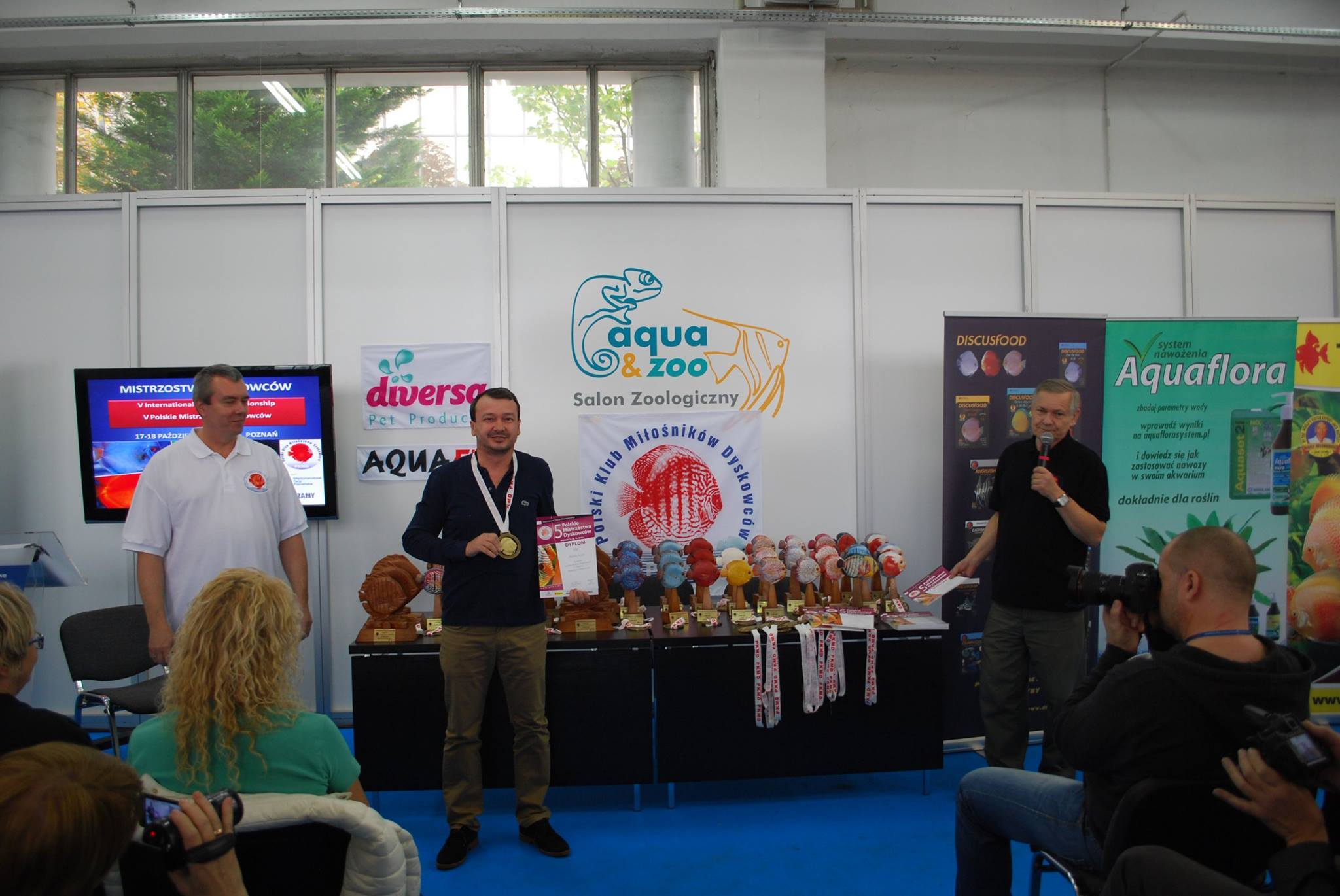
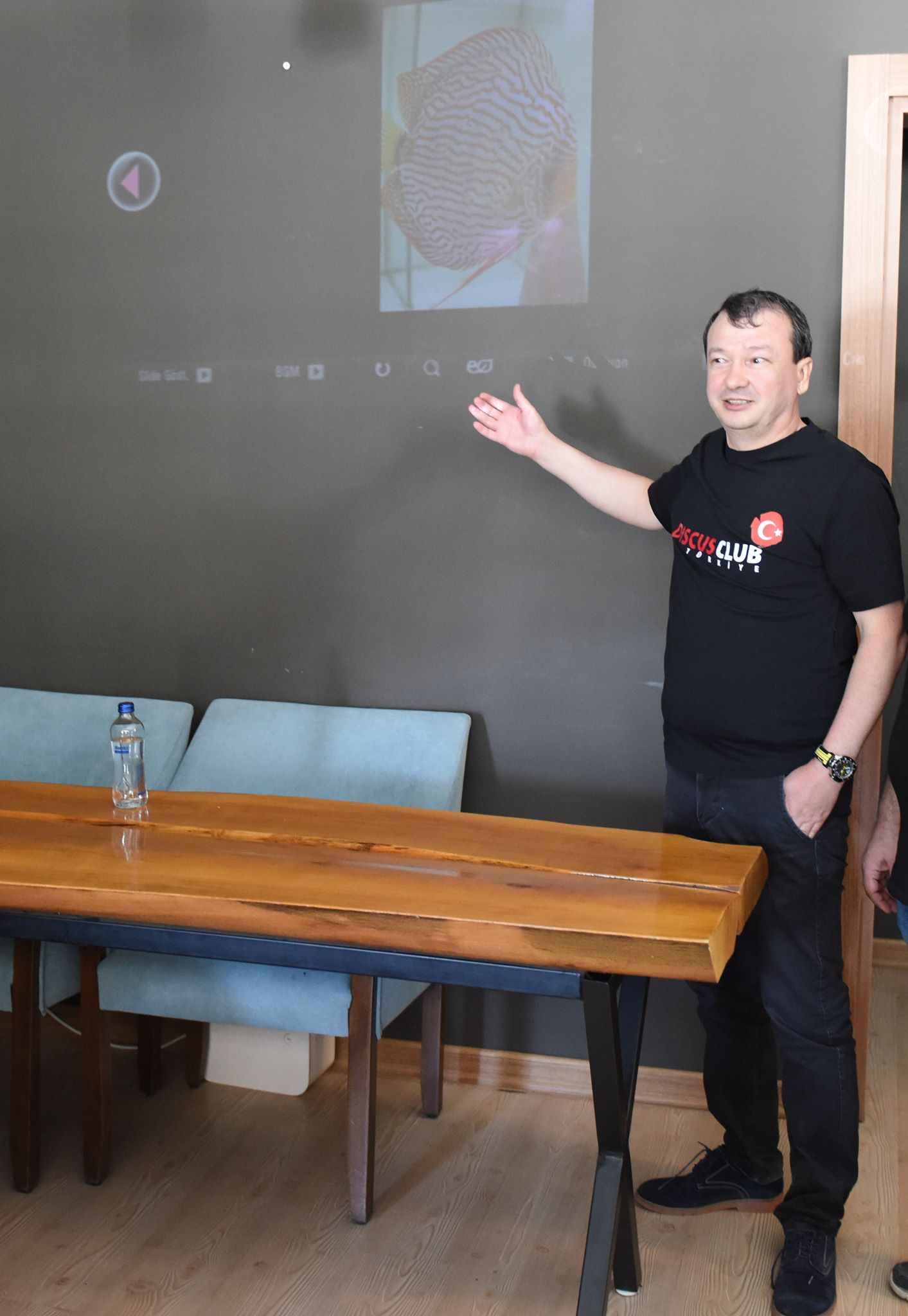 Except aquarium hobby I am interesting with football (my favorite team is Galatasaray), basketball, Formula 1, Model aircraft, Flying with small engine aircraft, sports.
Except aquarium hobby I am interesting with football (my favorite team is Galatasaray), basketball, Formula 1, Model aircraft, Flying with small engine aircraft, sports.
– people who follow You they can see You are a part of many discus events,what is the most important thing to set one good event?
1- Team
2-Sponsor
3-participants
4-Show place
5-Visitor requirements
6-Date of show
(My fishes from Duisburg)
– is it true on big events everythime win the biggest breeders? (some people think is it because of marketing and sale others think that is because they have a bigger stock for choosing the best fishes) what is your opinion?
We can answer this question together. The big breeders choosing their fish from thousands of the fish for championship and they have advantages . But hobbyists choose their fish from small amount of fish but it doesn’t mean hobbyist doesnt have any chance to take any price at any championship. Today most of the discus championships putting some rule to protect hobbyist and they are putting a fish limit for every fish category for every breeders.
-which show today is the biggest and have a best quality of show fishes?
In my opinion It was AQUARAMA in Singapore for Discus Show and Contest and The International Discus Championships in Duisburg Germany (the reason is it was the largest gathering of the world dedicated to the discus) I was in Duisburg 8. International Discus Championship with my fish to test the quality of my fish which I work on it many years. After these two championship my third favoritte is Polish International Discus Championship which is organized by the Polish Club of Discus Lovers (PKMD). In this show there were more than 130 fish and the most important point is most of them was from Poland breeders and fish quality was excellent. Fot this show second important point was show place more than 20000 visiters visit this great show in 2 days. The fourth important competition for me was Mediterranean discus fish Competition ( Greek Discus Show organized by my brother Nidal Rezeq )
– You are juddging many discus shows,which is your criteria for judging?
At present, there are no uniform international arrangements as to the rules for assessing discus fish at contests. During the interviews with many judges, most of them admitted that this solution is clear and easily understandable for all evaluators. Noteworthy is the fact that the system for assessing other species of fish at international and national competitions was based on the 10 x 10 model,, and for each of them the judge could maximum to grant 10 points. According to the proposed idea, the judges’ card may in this case include the following issues:
Body size
Proportions and harmony of the body
Dorsal fin, anal fin
Tail fin
Fins and abdominal fins
Gills
Eyes
Pattern on the body
Colors
General appearance
Body size
From many descriptions of the color groups, it appears, that while species occurring in the natural environment have in many cases the possibility of reaching sizes over 20 centimeters, then it does not reach such a large size in breeding colored forms in a given color variety.
Proportions and harmony of the body.
According to specialists, the proportions and harmony of the body are elements that are very important and significantly affect other fish characteristics. The body of the discus should be perfect and any nicks in the body flesh. protruding scales and malaligned scales unacceptable. The generic name of the fish in question clearly suggests how a discus fish should look like. Looking at the fish from the side, her body should be put in a circle. It is worth noting that when we say „body”, most often in the case of discus fish, it is the head and trunk of the fish, while omitting its fins. Regardless of the view expressed in this matter, if the fins are also included in the body, only the posterior part of the caudal fin can be found outside the circle.
A strong lateral flattening of the body is another element affecting the shape of the fish. The discus should be well muscled, and the skeletal components can not be seen through the skin. The body of the fish should in principle resemble the circle as much as possible.
Dorsal and anal fin.
Fins are another very important element of the assessment, because they significantly affect the entire appearance of the fish. The fins should be symmetrical.The margins of both of dorsal and anal fins should be smooth and not jagged and they should be of a size that is proportionate to the body . The rays on the fins should be straight . The dorsal fins should start off from the first ray which should show a smooth continuation from the forehead. The rays should not overlapped or appear uneven. For the purposes of this point of assessment, the judge should assess the overall appearance of the dorsal and anal fins. Any defects, stains, endburns, turbidity and cracks appearing on them reduce the possible scoring.
Tail fin
Separating the caudal fin as a separate element of the assessment seems to be right. It is recommended, that the final part of the base of the dorsal and anal fin together with the beginning of the base of the caudal fin create a vertical line. The caudal or tail fin, its shape should resemble a partially open fan, and its ending should form a gentle semicircle emphasizing the circular shape of the fish. All rays in the tail fin should be well marked, straight and proportionally distributed.
Defects, stains, as well as overburning of the final part, turbidity, tarnishing, discoloration and cracks occurring in it absolutely reduce the possible scoring.
Pectoral and abdominal fins.
Any defects, stains, overburning of tips, turbidity and cracks occurring on them, necessarily reduce the possible scoring. Hard rays should be expressive and well marked. The soft-rays parts in these fins should be wide and well-shaped.
Gills.
Gill covers should be proportional to the size of the head and the entire body. Judge has to control any defect of gills problem too .
Eyes.
Both pupils should be clear and reflective. The nicest iris should be one that is uniformly colouredall round (any range of red color), unbroken and without dark marking on it. Both eyes should be identical in size and should be proportion of the body size. Approximate ratio should be 1:7
Pattern on the body
In many forms of colorful discus fish, which are grouped in a given color group, the pattern that covers the body or its absence determines the attractiveness of the fish. While the definition of basic colors is basically no problem, it is usually much harder to describe patterns found on discus fish.
Generally, it can be assumed that the pattern appearing on the discus body is determinant of belonging to a given color form. It can be made of various thicknesses and lengths of lines, often undulating, dots, stains etc. The expressiveness of the pattern depends on the color form to which discus belong. In a number of cases, it can be contrasting and flashy, but it can also be delicate and as if damped by the basic color.
Coloring
Vivid and decisive basic colors can only be observed in healthy and well-feeling fish that do not know what the stress is. Generally it will not be a mistake to say, that the fish should „shine”. Brightness, contras and intensity is very important when you judge fish.
General appearance
The discus should appear healthy and well nourished. A good deportment is one in which the fish swim elegantly around the tank. The larger a discus is and holding other factors constant,the more attractive it is. On this point alone, it may gain more marks when compared to an undersized fish.
– what do You looking on fish when you judging,and what is the priority list for judging?(what is the most important and what is the less important,some scale from 1-5).
1- Proportions and harmony of the body and Body size
2- Dorsal fin, anal fin, tail fin
3- Fins and abdominal fins and gills
4- Eyes and Pattern on the body
5- Colors of the fish
– Genetics,what do You think how much is it import for breeding fishes and crossing?
If you want to breed high quality discus genetics of the discus fish is very important. For that reason people have to work with pure discus strains Discus to take good result, the descendants of which in many successive generations are exactly like themselves, form a pure strain. A pure strain continues to breed true and is described as genetically stable or “homozygous”.
Conversely, where breeding does not result in successively pure descendants, but in offspring with a number of differing characteristics the fish concerned are genetically mixed or “heterozygous”. Almost all cultivated Discus strains today are genetically mixed or heterozygous.
Second people have to know BASIC INHERITANCE AND MENDELIAN PRINCIPLES
Genetic variation generally results when there is a mutation or permanent change in a gene. ” Genotype” refers to the genetic material of an individual while “phenotype” refers to the observable traits. The “genotype” of a Heckel Discus in which the letter H is used as the symbol for the dominant Heckel bar gene is “H H”. The “phenotype” or appearance of this fish is a Discus with a prominent middle vertical bar.
Mendelian principles state that certain factors retain their individuality from generation to generation. Mendelâs first principle states that when individuals which are homozygous for a particular characteristic (such as a red eye) are crossed, all F1 descendants are identical with regard to the characteristics examined. That is, if a Discus is homozygous (a genetically pure) line, selected only for red eyes, all F1 descendants will have red eyes.
Mendelâs second principle (the law of segregation) holds that the F2 individuals are not identical among each other and characteristics of the parent generation reappear. An example of this would be mating two phenotypical identical red eyed F1 Discus with each other. The grandparents are a genetically true breeding red eyed Discus and a genetically true breeding amber eyed Discus. The subsequent generation (F2) consists of not only red eyed fish but, once more there will be amber eyed fish which look like their grandparent. Nonetheless, in the F2 generation the red eyed fish are in the majority by roughly 75% or 3:1.
A recessive gene is expressed only when present in a double dose, i.e. from both parents. A very rare exception occurs when a chromosome carries a recessive gene and the other chromosome of the pair breaks and uses some genes. An individual that is homozygous for a recessive factor exhibits that trait and breeds true for that trait when mated to another individual that is homozygous for the same gene.
The third Mendelian principle, (the law of independent assortment) or the rearrangement of hereditary factors. In this case all pairs of factors by which the original parents differed from one another can, in the F2 generation, appear in any combination and cause the development of a completely new phenotype or appearance. One trait does not influence others which are transmitted, i.e., inheritance of a red eye has nothing to do with inheritance of short gill plates.
An incomplete dominate gene is expressed differently when present in either a single or a double dose. In this case, each gene is expressed equally and appears to blend, although in actuality they do not. This is known as intermediate inheritance.
– many breeders again put a wild blood in their hatcherys wild cuipeua,royals,heckels,red spotted, they try to make some cross fishes or they try to save genetics (many deformed fishes(gill covers,fin defection…))?
A wild discuss fish is simply a discus fish which has been caught in the wild, or is bred from wild discuss which have not come into contact with any hybrid discus fish. Wild discus are more coveted in terms of being valuable as show fish, so if you are planning on breeding discus fish for profit, you may wish to keep your wild discuss and your hybrid discuss separate when it comes to breeding.
We can use selective breeding wild discus to improve body, shapes, colors, patterns and to corrected some problems in our hybrit discus fish. But it needs more time (not easy to correct some problems).
– when breeders crossing wild fishes with hybrids,what is important thing which breeder must follow?
People have to choose correct wild fish strain to take good result and have to know Mendelian Principles.
– What You can advice for keepers how they must start with keeping discus? (size of aquaria,preparing water,filtration,lightning..)?
1- Big aquarium is always better for keeping healty and big discus fish.
2- Good water source
3- Good filtration system
4-good heater
5- Good lightning
But the most important think for me hobbyist has to read many book about discus fish before starting discus . If you start your adventure with good fish you can not meet with many problem in the future. In my opinion if you want to take best results to growth big fish 50 liters per fish is ideal.
– how much right water and feeding affect on fishes? (faster growth,healty fishes..)? (many people mixing their own mix ,is it every mix right for feeding discus)?
Water quality is always very important for discus fish. Many times minor adjustment to the wather are sufficient to correct any unwellness and there is no need to resort to use of medications which will only make it worse. For that reason I am making %50 water change daily. In fact if you know the discus fish you can understand the water quality from your fish breathing , eye color, fins and actions.
Foods for discus are very important factor to healty discus fish and faster growth too
It is best to go for frozen and dry food in order to bring your fish to peak health. Combine various foods if needed to make sure your discus fish gets all the vital minerals, vitamins, and nutrients. Discus fish, like every other living organism, require certain vitamins in order to maintain their nutritional needs. Vitamins are not only a source of energy, but instead provide the necessary building blocks for proper functioning, immune, reproductive, and digestive systems, especially for the production of enzymes within the body.
Today most of the discus fish food brands are manufectiring food rich in vitamins and proteins that are essential for a good development of discus
One of the biggest mistakes made by beginners is that they tend to over feed their discus fish which in turn leads to fish obesity, this results in a whole lot of health issues, and a dirty tank.
In its juvenile stage your discus fish might even need a 50 percent protein based diet while when it matures it will require around 35 to 40 percent protein in its diet. It is important to note that their entire diet is not protein, however, and must be supplemented by both fats and vitamins.
– many keepers feed their fishes with frozen food ( mysis,daphnia,bloodworms,artemia,white and black mosquito larvae,krill…) is it all good for discus diet?
Today many company is producing every kind of frozen food. I am using many kind of frozen foods and never meet with any problem. I recomended them to hobbyists.
– can You reccomend something about water quality and feeding to always have a healty and satisfied fishes?
I am feeding my adult discus 3 times a day and baby fish 8 times a day.
– which medication every discus keeper must to always have for first aid?
Epsom Salt – for bloat and constipation
Rock salt – general tonic
Metronidazole – intestinal flagellates
Parasite Clear (or fluke tabs) – fluke, external parasites, tapeworm
Formalin – external parasite, external antibiotic
Normaly I am against medicine. The reason is most of the medicine we use in our aquarium is very dangerous for human health and causing cancer. Second when you start to use medicine after medication a few months later you are meeting with same problem at your fish again. instead of using medicine in your fishhobbyist have to learn how to keep their fish healty.
– salt bath on discus fishes,yes or no and why. On few forums and fb groups we see a many conclusions which percentage,how long,and what salt solve,what is your opinion?
I recommend that you use salt, before you try anything else for parasites. I recommend salt so often because it has so many benefits over other medicants.
Namely:
1) It does not harm the majority of fish species.
2) It does not push sick fish “over the edge.”
3) It eliminates, QUICKLY, 7 of 9 parasites I can easily recall.
4) It does not get bound out of the system by organics or sunlight.
5) It does not pose a health risk to humans contacting it.
6) It is cheap.
7) It won’t harm your filter!
Salt Bath for whole tank.
This is used for a continued treatment over several days and is very useful for minor irritations that the fish maybe showing. It helps them to shed slime coat efficiently and therefore any external parasites that are irritating them.
The recommended dosage is 1 – 3 grams of salt per litre of water.
Although it may seem to be a large amount of salt when added to a large tank the above dosage is fine.
When water changing during treatment you should re add the correct amount of salt for the water you have changed.
– you have a wish to go in Amazonia and catch your own discus,which discus you want to catch for yourself?
As you said Amazonia is in my plan and want to visit Manaus, Tefe and Rio Negro, Rio Unini, Rio Ica, Rio Japura ,Rio Nhamunda and want to catch red spooted green discus or Heckel discus it is my dream. I success for breeding wild brown discus and my new target is breeding wild green discus.
– beside this questions in the end of this interview do you want to add something what do you think is important and You want to share with Us?
I just want to say a big thanks to my Brother Mario and all discus lovers from Croatia to give me a chance for this excellent interview.
Mr.Acun thank you for accepting this interview,we wish you a luck in the future and nice catch in Amazonia.
